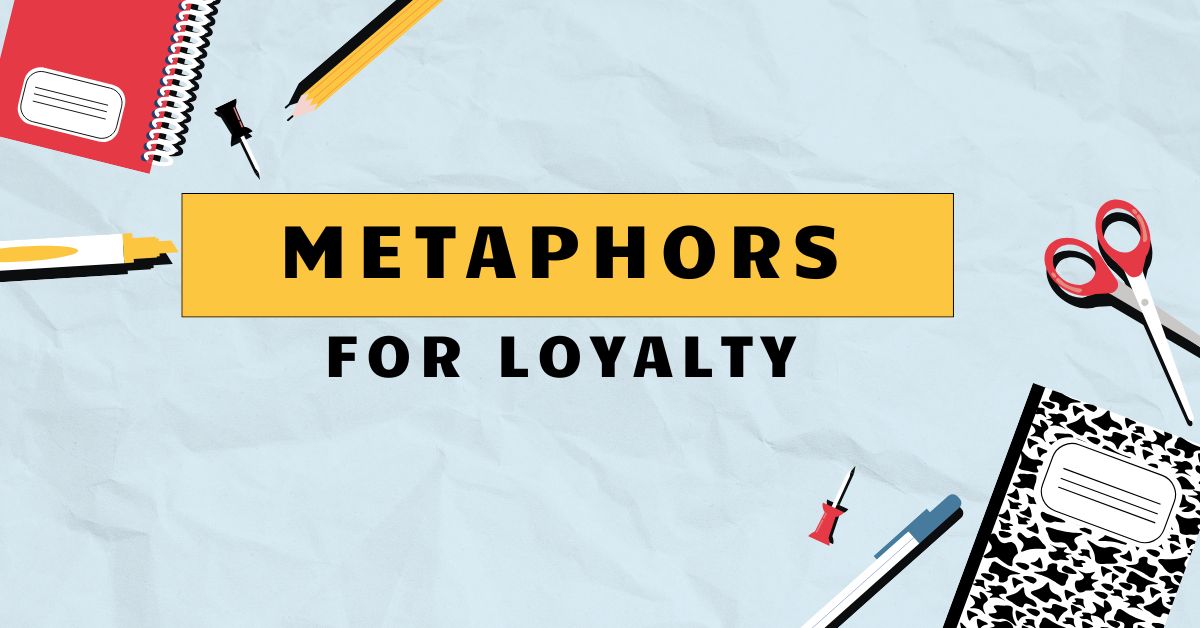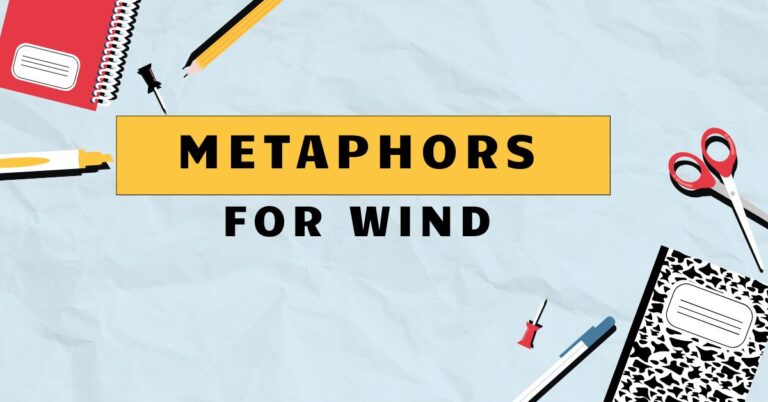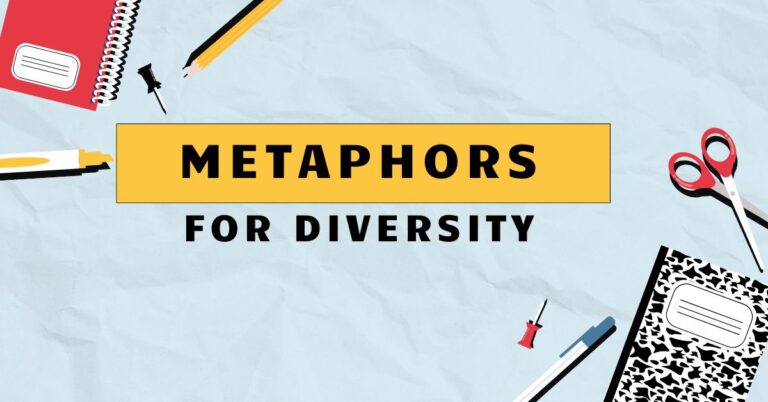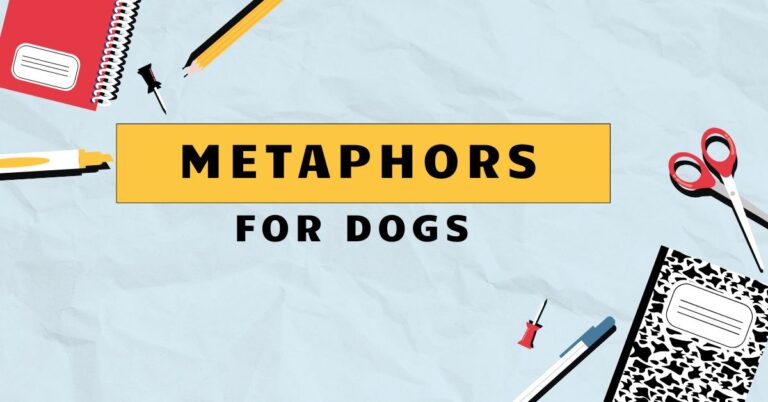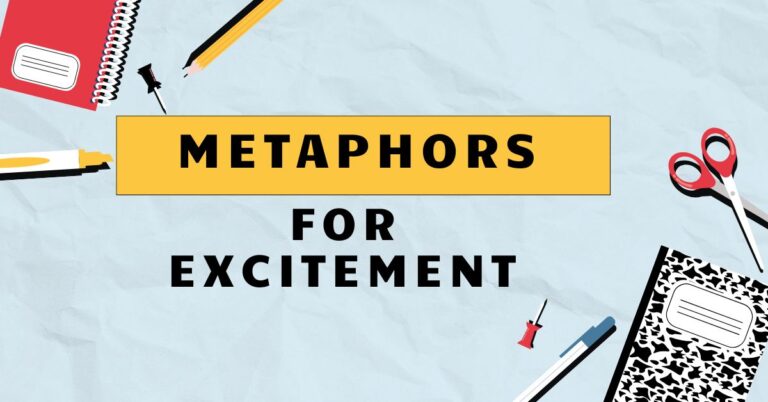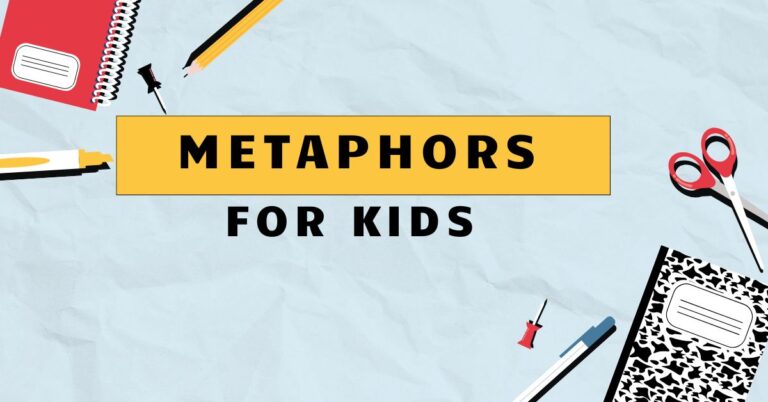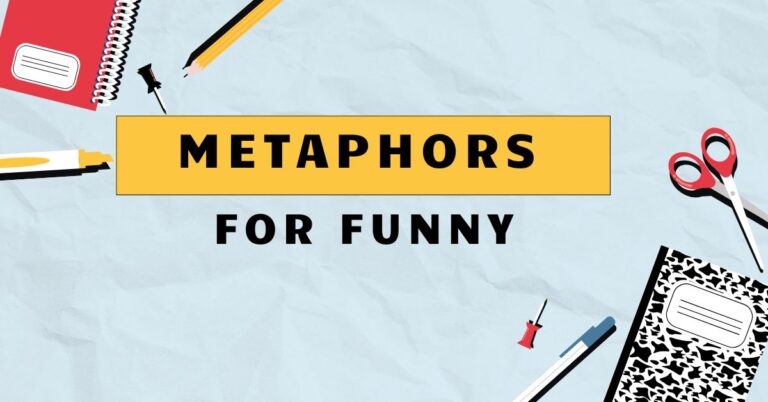47 Metaphors for Loyalty: Understanding Figurative Devotion
Loyalty, a cornerstone of relationships and societies, often transcends simple definitions. We use metaphors to express its depth and complexity, painting vivid pictures of unwavering commitment.
Understanding these metaphors not only enriches our comprehension of the concept but also enhances our ability to communicate nuanced feelings and ideas. This article explores the diverse metaphors for loyalty, their grammatical function, and how they are used effectively in various contexts.
Whether you are an English language learner, a writer seeking to add color to your prose, or simply curious about the power of figurative language, this guide will provide valuable insights and practical examples.
Table of Contents
- Introduction
- Definition of Metaphors for Loyalty
- Structural Breakdown of Loyalty Metaphors
- Types and Categories of Loyalty Metaphors
- Examples of Loyalty Metaphors
- Usage Rules for Loyalty Metaphors
- Common Mistakes with Loyalty Metaphors
- Practice Exercises
- Advanced Topics in Loyalty Metaphors
- FAQ: Metaphors for Loyalty
- Conclusion
Definition of Metaphors for Loyalty
A metaphor for loyalty is a figure of speech that describes loyalty by comparing it to something else, without using “like” or “as.” It is a way of understanding and expressing the abstract concept of loyalty through more concrete and relatable terms. Instead of stating directly that someone is loyal, a metaphor suggests that loyalty islikesomething else, thereby enriching the meaning and adding emotional depth.
These metaphors can draw upon various sources, such as nature, objects, or human actions, to convey different aspects of loyalty, such as its strength, resilience, or unwavering nature.
The function of a metaphor for loyalty is primarily to enhance communication by making abstract ideas more accessible and engaging. Metaphors can evoke strong images and emotions, allowing the audience to connect with the concept of loyalty on a deeper level.
In literature, metaphors add layers of meaning and symbolism, while in everyday conversation, they can make our expressions more vivid and persuasive. Understanding the contexts in which these metaphors are used is crucial for interpreting their intended meaning.
For example, comparing loyalty to a “shield” suggests protection and defense, while comparing it to an “anchor” implies stability and steadfastness.
Structural Breakdown of Loyalty Metaphors
The basic structure of a metaphor for loyalty involves two key elements: thetenorand thevehicle. The tenor is the subject being described (in this case, loyalty), and the vehicle is the object or concept to which it is being compared.
The connection between the tenor and the vehicle is not literal but based on shared characteristics or associations. The effectiveness of a metaphor depends on the strength and relevance of this connection.
For example, in the metaphor “Loyalty is a fortress,” the tenor is loyalty, and the vehicle is a fortress. The shared characteristic is the idea of protection and security.
Loyalty, like a fortress, provides a strong defense against external threats or challenges. The meaning is conveyed through the implied comparison, allowing the audience to understand the protective and unwavering nature of loyalty.
The context in which the metaphor is used further shapes its interpretation. If the metaphor is used in a political speech, it might suggest a nation’s unwavering commitment to its allies; if used in a personal context, it might describe a friend’s steadfast support during difficult times.
Types and Categories of Loyalty Metaphors
Loyalty metaphors can be categorized based on the specific aspect of loyalty they emphasize. Here are several key categories:
Metaphors of Strength and Steadfastness
These metaphors highlight the resilience and unwavering nature of loyalty. They often compare loyalty to strong, enduring objects or forces of nature.
Examples include comparing loyalty to a rock, a steel beam, or a deeply rooted tree.
Metaphors of Protection and Guardianship
These metaphors emphasize the protective role of loyalty, suggesting that it acts as a shield or guardian against harm. Examples include comparing loyalty to a shield, a fortress, or a watchful sentinel.
Metaphors of Fidelity and Faithfulness
These metaphors focus on the unwavering commitment and faithfulness inherent in loyalty. They often compare loyalty to a faithful dog, a steadfast partner, or a guiding star.
Metaphors of Bearing a Burden
These metaphors describe loyalty as a heavy responsibility or a burden willingly carried. Examples include comparing loyalty to carrying a torch, bearing a cross, or shouldering a responsibility.
Examples of Loyalty Metaphors
The following sections provide extensive examples of loyalty metaphors, categorized by type. Each table contains numerous examples to illustrate the diverse ways in which loyalty can be expressed figuratively.
Metaphors of Strength and Steadfastness
These metaphors emphasize the enduring and unwavering nature of loyalty, often comparing it to strong, unyielding objects or forces. The examples below illustrate how loyalty can be depicted as a source of strength and stability.
| Metaphor | Explanation |
|---|---|
| Loyalty is a rock. | Suggests that loyalty is solid, dependable, and unwavering, like a rock that withstands erosion. |
| His loyalty was a steel beam. | Implies that his loyalty provided unyielding support and strength. |
| Her loyalty is a deeply rooted tree. | Indicates that her loyalty is firmly established and cannot be easily uprooted. |
| Loyalty is an unshakeable foundation. | Emphasizes the stability and reliability that loyalty provides. |
| Their loyalty is a fortress wall. | Depicts their loyalty as a strong, impenetrable defense. |
| Loyalty is a mountain. | Suggests that loyalty is massive, immovable, and provides a strong presence. |
| His loyalty was an oak. | Implies resilience and longevity in his commitment. |
| Her loyalty is a granite pillar. | Indicates unwavering support and strength. |
| Loyalty is a sturdy bridge. | Emphasizes its role in connecting and supporting relationships. |
| Their loyalty is an ironclad bond. | Depicts their loyalty as unbreakable and strong. |
| Loyalty is a lighthouse. | Suggests that loyalty provides guidance and stability through difficult times. |
| His loyalty was a solid anchor. | Implies that his loyalty kept them grounded and secure. |
| Her loyalty is a steadfast flame. | Indicates that her loyalty burns brightly and consistently. |
| Loyalty is a concrete wall. | Emphasizes its unyielding and protective nature. |
| Their loyalty is a bulwark against despair. | Depicts their loyalty as a strong defense against negative emotions. |
| Loyalty is a bedrock principle. | Suggests that loyalty is a fundamental and unwavering value. |
| His loyalty was a mighty river. | Implies an unstoppable and powerful force of support. |
| Her loyalty is an enduring monument. | Indicates a lasting and significant commitment. |
| Loyalty is an unbreakable chain. | Emphasizes its strength and the bond it creates. |
| Their loyalty is a towering skyscraper. | Depicts their loyalty as a symbol of strength and resilience. |
| Loyalty is a deep canyon. | Suggests an unwavering and profound commitment that runs deep. |
| His loyalty was a firm handshake. | Implies a solid and trustworthy agreement. |
| Her loyalty is a silent vow. | Indicates a deep and unspoken commitment. |
| Loyalty is a constant hum. | Emphasizes its steady and unwavering presence. |
| Their loyalty is an old, reliable car. | Depicts their loyalty as dependable and always there when needed. |
Metaphors of Protection and Guardianship
These metaphors illustrate loyalty as a protective force, shielding individuals or groups from harm or adversity. They often draw parallels between loyalty and guardians, shields, or fortresses, emphasizing its role in providing security and safety.
| Metaphor | Explanation |
|---|---|
| Loyalty is a shield. | Suggests that loyalty protects against harm and adversity. |
| His loyalty was a fortress. | Implies that his loyalty provided a strong defense against external threats. |
| Her loyalty is a watchful sentinel. | Indicates that her loyalty is constantly vigilant and protective. |
| Loyalty is a guardian angel. | Emphasizes its role in protecting and guiding someone. |
| Their loyalty is a protective wall. | Depicts their loyalty as a barrier against danger. |
| Loyalty is a bodyguard. | Suggests unwavering protection and defense. |
| His loyalty was an umbrella in the storm. | Implies that his loyalty provided shelter and comfort during difficult times. |
| Her loyalty is a safe harbor. | Indicates that her loyalty provides security and refuge. |
| Loyalty is a security blanket. | Emphasizes its comforting and protective presence. |
| Their loyalty is a safety net. | Depicts their loyalty as a safeguard against failure or harm. |
| Loyalty is a Kevlar vest. | Suggests strong and impenetrable protection. |
| His loyalty was a barricade. | Implies that his loyalty blocked out negativity and threats. |
| Her loyalty is a moat around a castle. | Indicates that her loyalty provides a strong and secure defense. |
| Loyalty is a life raft. | Emphasizes its role in rescuing someone from a difficult situation. |
| Their loyalty is a lighthouse in the fog. | Depicts their loyalty as a guiding and protective force in uncertain times. |
| Loyalty is a security system. | Suggests constant monitoring and protection against threats. |
| His loyalty was a warm coat in winter. | Implies that his loyalty provided comfort and protection from harsh conditions. |
| Her loyalty is a guardian spirit. | Indicates that her loyalty is constantly watching over and protecting someone. |
| Loyalty is a bulletproof vest. | Emphasizes its ability to withstand and protect against harm. |
| Their loyalty is a firebreak. | Depicts their loyalty as a barrier that prevents the spread of danger. |
| Loyalty is a sentry on duty. | Suggests constant vigilance and protection. |
| His loyalty was a stalwart defender. | Implies that his loyalty provided unwavering support and protection. |
| Her loyalty is a watchful owl. | Indicates that her loyalty is observant and protective. |
| Loyalty is a haven. | Emphasizes its role in providing safety and refuge. |
| Their loyalty is a fortress of solitude. | Depicts their loyalty as a place of safety and peace. |
Metaphors of Fidelity and Faithfulness
These metaphors highlight the unwavering commitment and faithfulness inherent in loyalty. They often draw comparisons to faithful animals, steadfast partners, or guiding lights, emphasizing the reliability and constancy of loyalty.
| Metaphor | Explanation |
|---|---|
| Loyalty is a faithful dog. | Suggests unwavering devotion and faithfulness. |
| His loyalty was a steadfast partner. | Implies that his loyalty provided constant support and commitment. |
| Her loyalty is a guiding star. | Indicates that her loyalty provides direction and unwavering support. |
| Loyalty is a wedding vow. | Emphasizes the commitment and faithfulness inherent in a marriage. |
| Their loyalty is a handshake agreement. | Depicts their loyalty as a solid and trustworthy commitment. |
| Loyalty is a compass. | Suggests that loyalty provides direction and guidance. |
| His loyalty was a north star. | Implies that his loyalty was a constant and reliable guide. |
| Her loyalty is a true north. | Indicates that her loyalty is unwavering and dependable. |
| Loyalty is a sacred promise. | Emphasizes the solemn and binding nature of loyalty. |
| Their loyalty is a silent understanding. | Depicts their loyalty as a deep and unspoken commitment. |
| Loyalty is a homing pigeon. | Suggests an unwavering return to a central point or person. |
| His loyalty was a marriage. | Implies a deep and committed bond. |
| Her loyalty is a religion. | Indicates a fervent and unwavering devotion. |
| Loyalty is a moral compass. | Emphasizes its role in guiding ethical behavior. |
| Their loyalty is a secret pact. | Depicts their loyalty as a private and unbreakable agreement. |
| Loyalty is an oath. | Suggests a solemn and binding promise of faithfulness. |
| His loyalty was a constant flame. | Implies unwavering dedication and commitment. |
| Her loyalty is a moral code. | Indicates a strict adherence to principles of faithfulness. |
| Loyalty is a blood oath. | Emphasizes the deep and unbreakable bond of loyalty. |
| Their loyalty is a shared secret. | Depicts their loyalty as a bond forged through shared experiences. |
| Loyalty is a vow of silence. | Suggests unwavering discretion and confidentiality. |
| His loyalty was a steadfast ally. | Implies unwavering support and commitment in alliances. |
| Her loyalty is a sister’s bond. | Indicates a deep and unbreakable familial connection. |
| Loyalty is a silent promise. | Emphasizes unspoken but deeply felt commitments. |
| Their loyalty is an unwritten rule. | Depicts their loyalty as an understood and unquestioned commitment. |
Metaphors of Bearing a Burden
These metaphors portray loyalty as a responsibility or burden that is willingly carried, emphasizing the sacrifices and challenges that may be involved. They often compare loyalty to carrying a torch, bearing a cross, or shouldering a responsibility, highlighting the weight and significance of unwavering commitment.
| Metaphor | Explanation |
|---|---|
| Loyalty is carrying a torch. | Suggests that loyalty involves bearing responsibility and leading others. |
| His loyalty was bearing a cross. | Implies that his loyalty involved enduring hardship and sacrifice. |
| Her loyalty is shouldering a responsibility. | Indicates that her loyalty involves taking on a significant burden. |
| Loyalty is wearing a crown of thorns. | Emphasizes the pain and sacrifice that may be involved in being loyal. |
| Their loyalty is carrying the weight of the world. | Depicts their loyalty as a heavy burden that they willingly bear. |
| Loyalty is a heavy backpack. | Suggests that loyalty involves carrying responsibilities and obligations. |
| His loyalty was a yoke on his shoulders. | Implies that his loyalty was a burden he willingly carried. |
| Her loyalty is a heavy chain. | Indicates that her loyalty binds her to certain responsibilities and obligations. |
| Loyalty is a debt to be paid. | Emphasizes the sense of obligation and responsibility that comes with loyalty. |
| Their loyalty is a ball and chain. | Depicts their loyalty as something that restricts their freedom but is willingly carried. |
| Loyalty is a solemn duty. | Suggests a serious and weighty responsibility. |
| His loyalty was a heavy crown. | Implies the burden of leadership and responsibility. |
| Her loyalty is a moral weight. | Indicates the serious ethical considerations involved. |
| Loyalty is a sacred burden. | Emphasizes the spiritual and emotional weight of commitment. |
| Their loyalty is an anchor. | Depicts the responsibility of holding something in place. |
| Loyalty is a cross to bear. | Suggests enduring hardship for a cause or person. |
| His loyalty was a silent vow. | Implies unspoken but deeply felt commitments. |
| Her loyalty is an unwritten contract. | Indicates understood but unspoken obligations. |
| Loyalty is a solemn promise. | Emphasizes the serious nature of the commitment. |
| Their loyalty is a lifelong debt. | Depicts an enduring sense of obligation. |
| Loyalty is a constant vigil. | Suggests an ongoing responsibility to protect and defend. |
| His loyalty was a guiding light. | Implies the responsibility of leading and showing the way. |
| Her loyalty is a moral compass. | Indicates the responsibility of making ethical decisions. |
| Loyalty is a sacred trust. | Emphasizes the importance of maintaining confidentiality and responsibility. |
| Their loyalty is a pact. | Depicts their loyalty as a shared agreement to bear responsibilities together. |
Usage Rules for Loyalty Metaphors
Using metaphors effectively requires careful consideration of context, audience, and purpose. Here are some key rules to follow when using metaphors for loyalty:
- Clarity: The metaphor should be clear and easily understood by the audience. Avoid obscure or overly complex comparisons.
- Relevance: The vehicle (the object or concept to which loyalty is compared) should have a strong and relevant connection to the tenor (loyalty).
- Consistency: Maintain consistency in the metaphor throughout the text. Avoid mixing metaphors or shifting the comparison in a way that confuses the audience.
- Appropriateness: Choose metaphors that are appropriate for the context and audience. Consider the tone and style of the writing.
- Originality: While common metaphors can be effective, strive to create original and imaginative comparisons that add depth and interest to your writing.
Exceptions and Special Cases:In some cases, a mixed metaphor (combining two or more unrelated metaphors) can be used intentionally for humorous or stylistic effect. However, this should be done with caution, as it can also lead to confusion.
Additionally, some metaphors may have cultural or historical significance that affects their interpretation. Be aware of these nuances and choose metaphors that resonate with your intended audience.
Common Mistakes with Loyalty Metaphors
Using metaphors incorrectly can detract from the clarity and effectiveness of your writing. Here are some common mistakes to avoid:
| Incorrect | Correct | Explanation |
|---|---|---|
| His loyalty was a sweet melody and a brick wall. | His loyalty was a brick wall. | Mixing metaphors can create confusion. Choose one consistent image: strength. |
| Loyalty is a broken clock. | Loyalty is a guiding star. | The vehicle should have a clear and positive connection to loyalty. |
| Her loyalty was like a fortress. | Her loyalty was a fortress. | Using “like” or “as” makes it a simile, not a metaphor. |
| The loyalty of the team ran swiftly upstream. | The loyalty of the team was a powerful current. | The vehicle should logically relate to the tenor, maintaining context of strength, not speed. |
Practice Exercises
Test your understanding of metaphors for loyalty with these practice exercises. Identify the metaphor in each sentence and explain its meaning.
| Question | Answer |
|---|---|
| 1. His loyalty was a rock in a turbulent sea. | Metaphor: rock in a turbulent sea. Meaning: His loyalty provided stability and support during difficult times. |
| 2. Her loyalty is a shield against criticism. | Metaphor: shield. Meaning: Her loyalty protects against negative feedback. |
| 3. Their loyalty is an unbreakable bond. | Metaphor: unbreakable bond. Meaning: Their loyalty is strong and cannot be broken. |
| 4. Loyalty is carrying a heavy torch. | Metaphor: carrying a heavy torch. Meaning: Loyalty involves bearing responsibility and leading others. |
| 5. His loyalty was a fortress against despair. | Metaphor: fortress. Meaning: His loyalty protected against feelings of hopelessness. |
| 6. Her loyalty is a guiding light in the darkness. | Metaphor: guiding light. Meaning: Her loyalty provides direction and hope in difficult situations. |
| 7. Their loyalty is an ironclad agreement. | Metaphor: ironclad agreement. Meaning: Their loyalty is strong and unshakeable. |
| 8. Loyalty is a cornerstone of their relationship. | Metaphor: cornerstone. Meaning: Loyalty is a fundamental and essential part of their relationship. |
| 9. His loyalty was a steadfast flame in the wind. | Metaphor: steadfast flame. Meaning: His loyalty burned brightly and consistently despite challenges. |
| 10. Her loyalty is a deeply woven tapestry. | Metaphor: deeply woven tapestry. Meaning: Her loyalty is complex, intricate, and strong. |
Exercise 2: Create your own metaphors for loyalty based on the following prompts:
| Prompt | Possible Answer |
|---|---|
| 1. Describe loyalty as a form of protection. | Loyalty is an impenetrable fortress. |
| 2. Describe loyalty as a source of strength. | Loyalty is a steel backbone. |
| 3. Describe loyalty as a burden willingly carried. | Loyalty is a king’s crown. |
| 4. Describe loyalty as a form of guidance. | Loyalty is a magnetic north. |
| 5. Describe loyalty as an unwavering commitment. | Loyalty is a lifelong promise. |
| 6. Describe loyalty as a constant presence. | Loyalty is a steady heartbeat. |
| 7. Describe loyalty as a steadfast support. | Loyalty is a reliable crutch. |
| 8. Describe loyalty as a secure refuge. | Loyalty is a safe haven. |
| 9. Describe loyalty as a moral obligation. | Loyalty is a binding oath. |
| 10. Describe loyalty as an enduring bond. | Loyalty is an unbreakable chain. |
Advanced Topics in Loyalty Metaphors
For advanced learners, exploring the cultural and historical contexts of loyalty metaphors can provide deeper insights. Different cultures may have unique metaphors for loyalty based on their values and traditions.
For example, some cultures may emphasize familial loyalty, while others prioritize loyalty to a leader or cause. Studying the metaphors used in literature and historical texts can reveal how the concept of loyalty has evolved over time.
Additionally, analyzing the use of extended metaphors (metaphors that are developed over several sentences or paragraphs) can enhance your understanding of figurative language. Extended metaphors allow writers to explore the nuances of loyalty in greater depth, creating richer and more complex images.
Examining the works of famous authors who have used loyalty metaphors effectively can provide valuable lessons in crafting compelling and evocative prose.
FAQ: Metaphors for Loyalty
- What is the difference between a metaphor and a simile?
A metaphor directly compares two unlike things without using “like” or “as,” while a simile uses “like” or “as” to make a comparison. For example, “Loyalty is a shield” is a metaphor, while “Loyalty is like a shield” is a simile.
- Why are metaphors for loyalty important?
Metaphors for loyalty enhance communication by making abstract ideas more accessible and engaging. They can evoke strong images and emotions, allowing the audience to connect with the concept of loyalty on a deeper level.
- How can I create effective metaphors for loyalty?
To create effective metaphors, choose vehicles that have a strong and relevant connection to loyalty. Consider the context, audience, and purpose of your writing, and strive for clarity, consistency, and originality.
- What are some common categories of loyalty metaphors?
Common categories include metaphors of strength and steadfastness, metaphors of protection and guardianship, metaphors of fidelity and faithfulness, and metaphors of bearing a burden.
- What are some common mistakes to avoid when using loyalty metaphors?
Avoid mixing metaphors, choosing vehicles that have a weak connection to loyalty, and using “like” or “as” when creating a metaphor (which would make it a simile).
- Can metaphors for loyalty be used in everyday conversation?
Yes, metaphors for loyalty can be used effectively in everyday conversation to make your expressions more vivid and persuasive. They can help you communicate nuanced feelings and ideas in a more engaging way.
- How do cultural contexts affect the interpretation of loyalty metaphors?
Different cultures may have unique metaphors for loyalty based on their values and traditions. Be aware of these nuances and choose metaphors that resonate with your intended audience.
- What is an extended metaphor, and how is it used?
An extended metaphor is a metaphor that is developed over several sentences or paragraphs. It allows writers to explore the nuances of loyalty in greater depth, creating richer and more complex images.
- How can studying literature help me understand loyalty metaphors better?
Examining the works of famous authors who have used loyalty metaphors effectively can provide valuable lessons in crafting compelling and evocative prose. It can also reveal how the concept of loyalty has been portrayed in different historical and cultural contexts.
- What role do emotions play in understanding metaphors for loyalty?
Emotions are central to understanding metaphors for loyalty because metaphors often evoke feelings associated with both the concept of loyalty and the object or idea it’s being compared to. These emotional connections deepen our understanding and make the metaphors more impactful.
- Is it possible to overuse metaphors for loyalty?
Yes, overusing metaphors for loyalty can make your writing sound contrived or cliché. Use them sparingly and thoughtfully to maximize their impact.
Conclusion
Metaphors for loyalty provide a powerful means of expressing the depth and complexity of this essential concept. By understanding the different types of metaphors, their structural elements, and the rules governing their usage, you can enhance your ability to communicate effectively and persuasively.
Remember to choose metaphors that are clear, relevant, and appropriate for your audience, and avoid common mistakes such as mixing metaphors or using similes instead of metaphors.
Continue to explore the use of metaphors in literature and everyday conversation to deepen your understanding of figurative language. By practicing the techniques outlined in this guide, you can master the art of using metaphors for loyalty and enrich your writing and communication skills.
Always consider context and audience when choosing and using metaphors to ensure your message resonates effectively. With careful practice and attention to detail, you can harness the power of metaphors to convey the nuances of loyalty in a compelling and memorable way.

